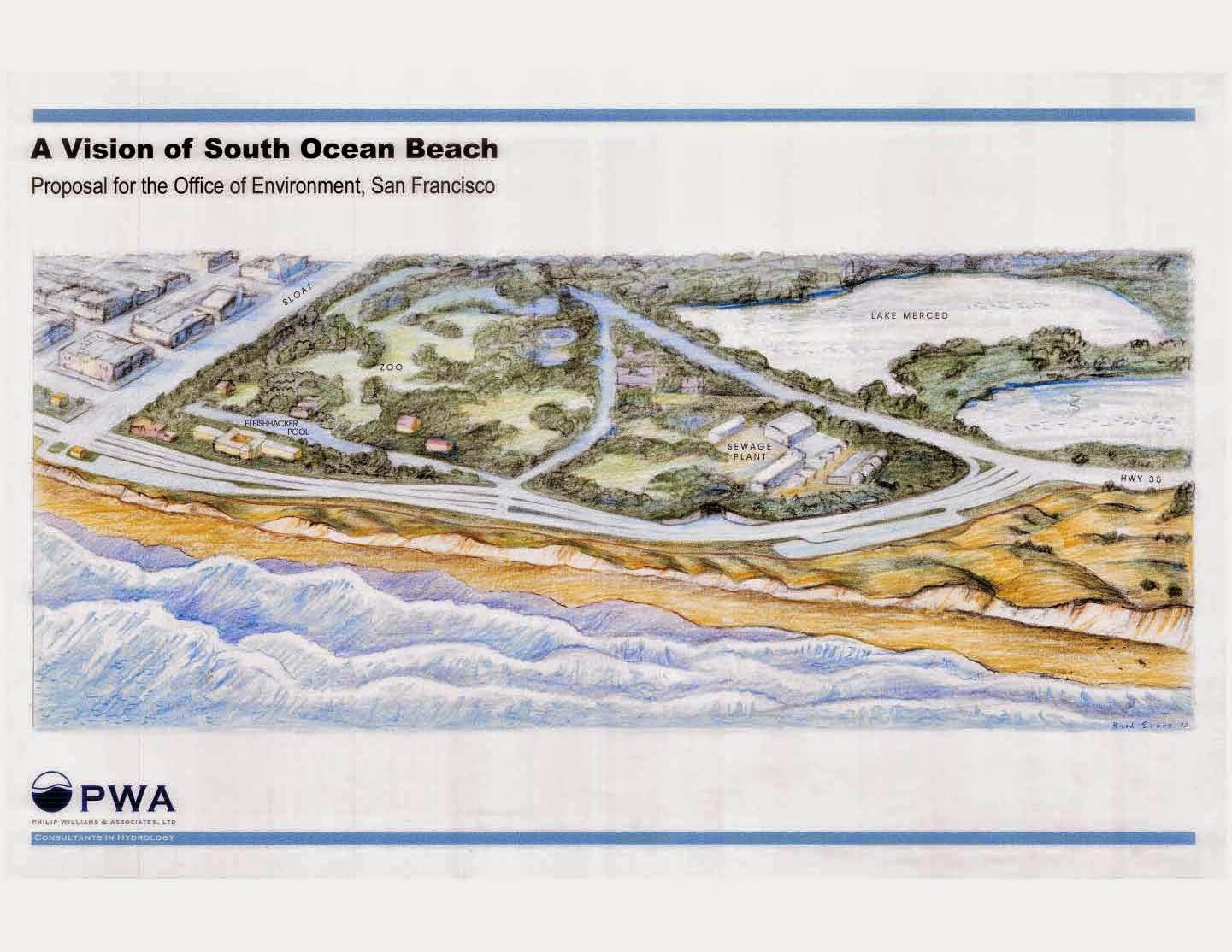Sand Ladder Access at the Sloat Muni Turnaround
Dear Surfriders and Friends,
The
Ocean Beach Master Plan final is officially now released and ready for download. A press conference will be scheduled shortly.
Again, the next step in getting a long term plan for the South Sloat area will involve a feasibility study of the SPUR recommendation. Surfrider, Save the Waves and others will advocate for a thorough analysis of viable options, including the re-route or relocation of the Lake Merced Tunnel (the piece of infrastructure at the heart of the armoring policy at Sloat). Please continue to voice your support for a truly sustainable solution that will restore our beach! You can help by writing letters to media outlets, political leaders, agency leaders as well as just spreading news and updates throughout the general community.
One noteworthy development is the announcement of a series of workshops involving erosion and sand management for the entire Bay Area coast. The Coastal Regional Sediment Management Plan (CSRMP) is seeking public input on how to use sediment or sand to address erosion hotspots from San Francisco down to Pacifica. As you may know, sand re-use will be a key component in restoring the South Sloat stretch of the beach. We also see it as a preferable interim measure while a Managed Retreat plan can be developed. There are similar armoring and beach loss issues just to our south in which sediment management will play a key role. Please try to attend these meetings and stand up for long term, sustainable beach preservation strategies. Surfrider believes there are many opportunities to use Managed Retreat along the coverage area of the CRSMP.
------------------------------------------------------------------------
Public Input Needed for Coastal Erosion Plan, San Francisco to Pacifica
Developing a Coastal Regional Sediment Management Plan (CRSMP)
The Association of Bay Area Governments and the Coastal Sediment Management Workgroup invite the public to provide input on a Coastal Regional Sediment Management Plan being developed for Fort Point, San Francisco, to Point San Pedro, Pacifica, at two identical meetings to be held in July, 2012. “Regional sediment management” refers to sand.
These meetings will:
Describe erosion issues affecting ocean beaches and coastal infrastructure, such as parking lots, highways, structures, storm drains, and sewage outfalls·
Present implementation options (proposed solutions such as beach nourishment, multi-purpose reefs, armor, allowed erosion, and managed retreat) and concepts for a regional plan and solicit public comments on plan concepts. See website for more info:
http://www.sfestuary.org/projects/detail.php?projectID=58
SF Region:
Thursday, July 12, 6:00-8:30pm
SPUR 2nd Floor Public Assembly Hall
654 Mission Street, San Francisco
Exhibition opens at 6:00, meeting begins at 6:30
Daly City/Pacifica Region:
Thursday July 19 7-9pm
City Council Chambers 2212 Beach Blvd. Pacifica, Ca
Additional public meetings will be held in the fall to gather public input on the completed draft Plan.
If you have any questions, please contact me.
Thank you,
Athena
Athena Honore
San Francisco Estuary Partnership
Association of Bay Area Governments (ABAG)
1515 Clay St, Suite 1400
Oakland, CA 94612
Phone 510-622-2325 Fax 510-622-2501
sfestuary.org
Learn about solutions to Bay issues:
http://www.sfestuary.org/podcast/
















